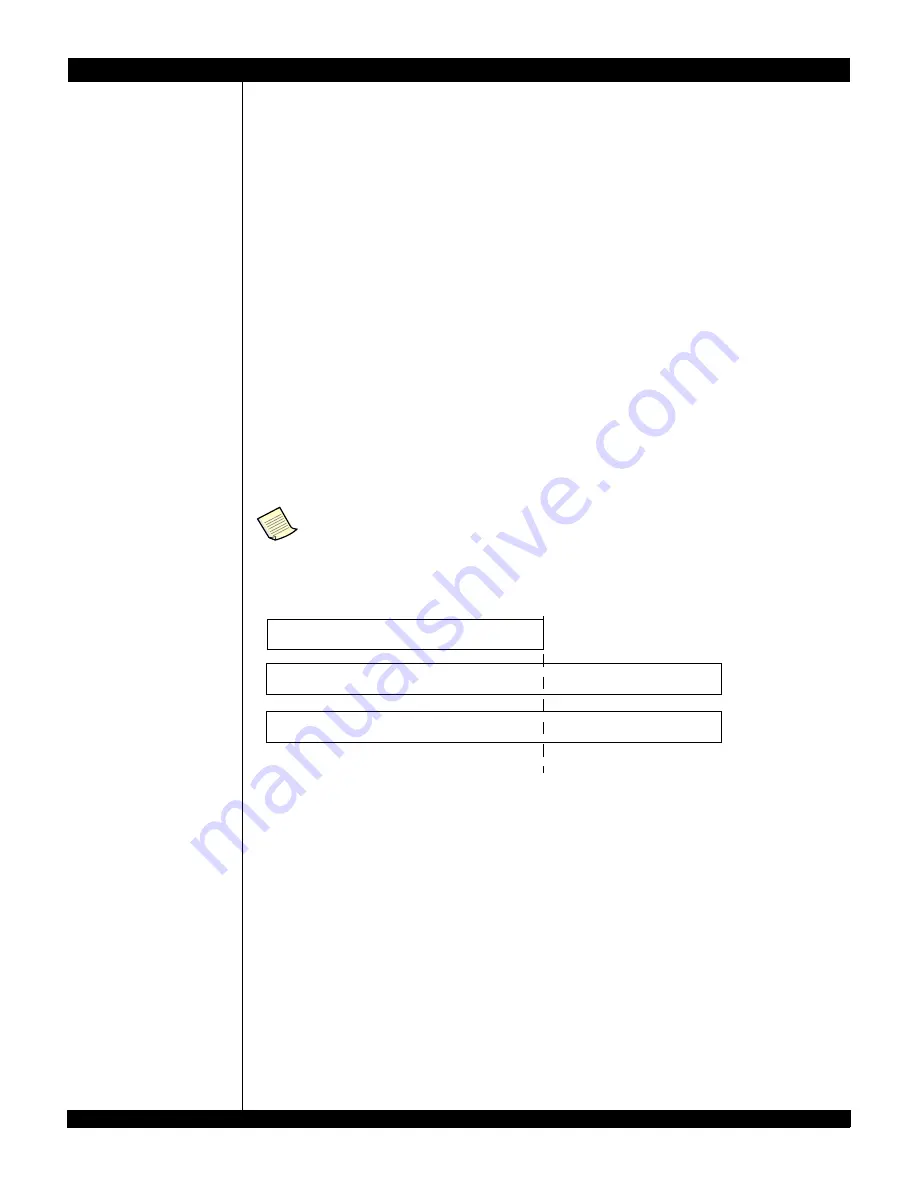
IDT sRIO Ports
Revision 1.5
Integrated Device Technology, Inc.
CPS-16/12/8 User Manual
2 - 4
July 10, 2012
The device supports the ability to route a packet which matches the “Trace Criteria” to the port referenced
by the packet’s destination ID (including multicast references) as well as to the trace port.
Each port provides a unique trace circuit such that the user may enable trace on up to 16 simultaneous
ports (4 for each of the 16 ports) as defined below.
2.2.1 Trace Criteria
The property of a given port matching a packet with a “Trace Criteria” refers to a successful comparison of
the first 160 bits in a received packet to multiple pre-programmed values stored at that port. A successful
match against a port’s Trace Criteria triggers a forwarding of the packet to the trace enabled output port.
Each port provides a set of four 160-bit comparison values which can be selectively applied to the first 160
bits of each packet that the port receives. Each port also provide a bit mask for each of the four program-
mable 160 bit comparison values which define which of the first 160 bits of packet data are relevant to the
comparison. A logical value of 1 in the comparison value mask indicate that the corresponding bits in the
programmed value and the corresponding bit in the packet data is compared. A logical value of zero in the
comparison value mask is used as a “don’t care”. A don’t care value results in an automatic match of the
corresponding bits in the programmable value with the corresponding packet data bits. When all bits of the
packet data match with a given corresponding bit in a given programmable value (after the value’s mask
has been applied) the Trace criteria has been met and the packet is forwarded to the trace enabled output
port. The packet trace is triggered by a logical “OR” of the comparison match results (packet data with the
four programmable values) such that if at least one match occurs, packet forwarding to the trace-enabled
port is performed.
Figure 2.1 Trace Matching Criteria
For clarification, if the user wants to trace a packet which is smaller than 160 bits, the number of mask bits
between the packet size and 160 must be set to don’t care.
A packet which matches any of the four values are forwarded to the trace enabled output port as well as
any other ports referenced by the packet’s destination ID.
The Trace Criteria architecture is illustrated in the diagram below.
The trace criteria is based on the “entire content” of the comparison value and its corresponding
bit mask. This is true in the event that the bit count of the received packet is smaller than 160
bits. In this event, in order to match the trace criteria, the number of bits in the mask which are
greater than the received packet data must be set to don’t cares as shown below.
Packet Data
bit
0
.............................................
.bit
n<160
bit
0
.......................................................................................
.bit
160
Comparison Dat
a
Comparison Mask
bit
0
.............................................
.bit
n<160
X
n+1
................................X
160
X = don’t care
















































